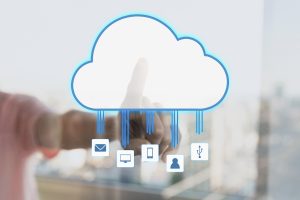In today’s fast-evolving technological landscape, mastering IT skills has become more than just an advantage—it’s necessary. As industries rapidly embrace digital transformation, the demand for skilled IT professionals grows. Yet, traditional methods of IT education, with their one-size-fits-all approach, often fail to meet the diverse needs of learners. Enter data-driven learning platforms powered by real-time analytics, revolutionizing IT education by offering personalized learning paths tailored to individual performance data.
The Shift from Static to Dynamic Learning
Conventional learning environments, whether in classrooms or online, have long relied on predefined curriculums that do not account for students’ unique learning styles or progress. These static models assume that all learners progress at the same pace and have similar abilities, resulting in a uniform learning experience that often leaves students disengaged or overwhelmed.
However, data-driven learning platforms are shifting this paradigm. These platforms leverage advanced algorithms and analytics to monitor student performance in real-time. Collecting data on every action—such as quiz results, time spent on exercises, and interaction with materials—provides insights into a learner’s strengths, weaknesses, and learning preferences. This information is then used to tailor the curriculum, offering a dynamic and personalized learning experience.
How Real-Time Analytics Enhances Personalization
At the core of data-driven learning is real-time analytics. These platforms continuously track and analyze a learner’s performance, ensuring immediate and relevant feedback. But how exactly does this translate into better learning outcomes, particularly in IT education?
Personalized Learning Paths
Based on performance data, learners receive customized learning paths that cater to their unique skill levels. For example, suppose a learner excels in programming but needs help with network security. In that case, the platform can adjust by offering more challenging exercises in coding while providing additional resources and simplified tasks in the areas where they need improvement. This level of personalization ensures that learners are both energized and energized, keeping them engaged and motivated.
Adaptive Learning
Data-driven platforms use adaptive learning technologies to modify the pace and difficulty of lessons based on real-time performance. The system can introduce more advanced concepts if a learner progresses quickly through a topic. Conversely, if a learner struggles, the system may provide extra practice sessions or explain concepts differently to reinforce understanding. This adaptability is particularly beneficial in IT, where learners may have varying proficiency levels in coding, networking, databases, or cybersecurity.

Instant Feedback and Assessment
Traditional education often relies on periodic assessments, such as exams or assignments, to gauge a student’s understanding. These methods, while useful, can delay feedback, which is crucial for learning. Data-driven platforms offer instant feedback, allowing learners to immediately understand where they went wrong and how to correct their mistakes. In IT, where problem-solving is key, this immediate feedback loop fosters a deeper understanding of concepts.
Progress Tracking and Goal Setting
Real-time analytics allow learners and instructors to track progress over time. Learners can set realistic goals and monitor their achievements by visualizing data such as completion rates, time spent on tasks, and quiz performance. This feature is particularly beneficial in IT education, where skills are built incrementally, and mastering one concept often lays the foundation for the next.
Benefits of IT Education
Integrating real-time analytics into IT education benefits learners, educators, and organizations.
1. Bridging the Skills Gap
The IT industry is constantly evolving, with new technologies emerging faster than educational systems can keep up. Data-driven platforms help bridge the skills gap by offering up-to-date, relevant content that can be adjusted in real-time to meet industry demands. For example, when a new programming language or security protocol becomes popular, the platform can quickly incorporate lessons on these topics, ensuring learners acquire the skills employers need.
2. Efficiency and Flexibility
Balancing education with work, family, and other commitments can be challenging for many learners. Data-driven learning platforms offer flexibility, allowing learners to progress at their own pace, anytime and anywhere. This is especially advantageous in IT education, where professionals often seek to upskill while maintaining their current roles. The ability to track performance and receive personalized guidance on demand accelerates the learning process, making it more efficient and flexible.
3. Fostering a Growth Mindset
One key benefit of data-driven learning is its emphasis on continuous improvement. By providing real-time insights into performance, learners can see their progress and areas for growth. This fosters a growth mindset, encouraging them to view challenges as improvement opportunities rather than obstacles. In IT, where rapid problem-solving and adaptability are crucial, cultivating this mindset can lead to greater learning and professional development success.
4. Empowering Instructors with Data
While learners benefit from personalized paths, the data also empowers educators. Real-time analytics provide instructors with a comprehensive view of their students’ performance, allowing them to identify trends, spot struggling learners, and offer targeted support. Instructors can use this data to tailor their teaching strategies, focusing on areas where learners need the most help and adjusting their lessons accordingly.
Case Study: Data-Driven IT Learning in Action

Consider a hypothetical case study involving a cloud computing course to illustrate the transformative power of data-driven learning in IT education.
A learner enrolls in an online platform to gain cloud certification. The platform uses real-time analytics to monitor the learner’s progress. In the initial stages, the learner performs well in theoretical modules but struggles with hands-on labs, particularly in configuring cloud infrastructure.
The platform automatically adjusts the curriculum using performance data. It introduces additional tutorials and interactive simulations on infrastructure configuration while temporarily pausing advanced topics. The learner also receives immediate feedback on their errors during labs, with suggestions for improvement.
As the learner’s understanding improves, the platform gradually reintroduces advanced topics. Over time, the learner not only masters the foundational skills but also gains the confidence to tackle more complex tasks.
The learner might have become more satisfied and energized with real-time analytics and personalized learning paths. Instead, data-driven learning helps them overcome challenges and achieve certification, preparing them for a successful career in cloud computing.
The Future of IT Education: A Data-Driven World
As we move into the future, the role of data-driven learning platforms in IT education will only grow. With advancements in artificial intelligence, machine learning, and big data, these platforms will become even more sophisticated, offering hyper-personalized learning experiences that adapt to performance and preferences, motivations, and career goals.
Moreover, the integration of predictive analytics could allow platforms to anticipate learning difficulties before they occur, providing preemptive support to ensure learners stay on track. For example, if data suggests a learner is likely to struggle with a particular module, the platform can proactively offer resources, tutorials, or peer support to prevent setbacks.
Data-driven learning is the future of IT education. These platforms transform how we acquire and apply IT skills by leveraging real-time analytics to create personalized learning paths. As technology advances, the potential for data-driven learning to empower learners, bridge skills gaps, and foster continuous improvement is limitless. For anyone looking to build a successful career in IT, the future is data-driven—and the future is now.






